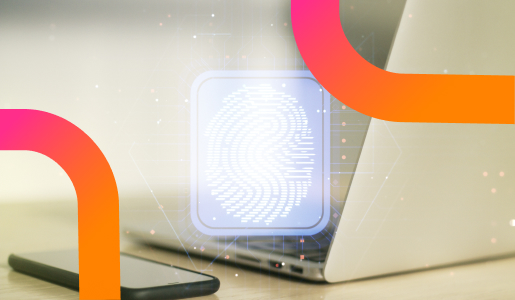With the rise of digital transformation, more and more companies are adopting electronic signature solutions to sign contracts, quotes, purchase orders, and other documents securely. However, another solution deserves consideration to address the security and traceability needs of certain documents: the electronic seal.
Although similar to an electronic signature in its functionality, it actually meets different requirements. While an electronic signature allows an individual to approve a document, an electronic seal is used to guarantee the origin and integrity of a document issued by an organisation.
What exactly is the difference between an electronic seal and an electronic signature? When should one be used over the other? For businesses, navigating these choices isn’t always straightforward, especially as the European regulatory framework under the eIDAS regulation[1] outlines various levels of reliability.
When properly utilised, electronic seals and signatures are powerful tools for ensuring security and automating processes, provided their specific uses and applications are well understood.

Table of contents
Electronic Signature: engaging an individual
The European eIDAS regulation[1] defines an electronic signature as a set of “data in electronic form which are attached to or logically associated with other data in electronic form and which the signatory uses to sign.”
Let’s start with a quick reminder about electronic signatures. Much like a handwritten signature, an electronic signature seeks to obtain the consent and approval of a signatory (a natural person) regarding the content of a document. By signing a contract electronically, the individual agrees to its terms and commits to adhering to them. This is a significant act that legally binds the signer.
In practice, when someone electronically signs a document (after being authenticated), a digital certificate is associated with their signature. This certificate acts as a “digital ID card,” confirming the signer’s identity at a specific moment in time. Once signed, the document is sealed and cannot be altered without detection, ensuring the integrity of the signed document.
Electronic seal: the organisation’s digital stamp
The electronic seal, also referred to as a digital seal, can be summarised as the digital equivalent of a company’s stamp or an official seal used by an administration. When an organisation (such as a company, local authority, or association) applies its electronic seal to a document (e.g., invoices, certificates, diplomas), it certifies the document’s origin and integrity.
Like a physical stamp, an electronic seal can be applied by an authorised employee of the organisation. However, the key difference from an electronic signature is that it binds the responsibility of the organisation (a legal entity), not the individual employee (a natural person) applying it. Furthermore, while a signature must always be manually completed by the signer, an electronic seal can be applied automatically by an organisation’s information system, without human intervention.
A common legal framework for electronic seals and signatures
From a legal perspective, electronic seals and signatures carry the same weight and are governed by the same regulation: the European eIDAS regulation[1]. This regulation defines three levels of reliability for both electronic signatures and seals:
- Simple electronic signature: The basic level, offering limited guarantees.
- Advanced electronic signature: An intermediate level, providing assurances about the identification of the signer or seal creator.
- Qualified electronic signature: The highest level, offering robust guarantees and a presumption of reliability.
For everyday uses, the simple or advanced levels are often sufficient. However, for highly sensitive documents or cases with a high risk of disputes, it is strongly recommended to use a qualified electronic signature or seal issued by an accredited trust service provider.
Electronic seal vs electronic signature: which tool for which purpose?
In summary, electronic seals and signatures meet different needs:
- Electronic signature: captures the approval of a natural person for a document and binds their responsibility. Commonly used for contracts, quotes, purchase orders, etc.
- Electronic seal: guarantees the origin and integrity of a document issued by an organisation. Commonly used for invoices, diplomas, certificates, certified copies, etc.
The same organisation may require both tools depending on the process. While electronic signatures are now widely used, electronic seals remain less well known among businesses. Yet, they offer several advantages:
- They enable the automated validation of documents in bulk.
- They enhance the credibility and evidential value of issued documents.
- They streamline exchanges and simplify business processes.
- They lead to substantial cost savings (reducing printing, postal mail, paper archiving, etc.).
Ultimately, the choice between an electronic seal and an electronic signature depends on the context of use and the type of document involved. Often, the ideal approach is to use both complementarily, relying on a qualified trust service provider to ensure maximum legal reliability for digitally signed or sealed documents.
Experts like Evidency can guide you in finding the most suitable solution for your business needs and securing your documents over the long term.
Tableau récapitulatif des différences entre cachet électronique et signature électronique

[1] Règlement (UE) N°2024/1183 du 11 avril 2024 modifiant le règlement (UE) n° 910/2014 en ce qui concerne l’établissement du cadre européen relatif à une identité numérique (eIDAS 2) : https://eur-lex.europa.eu/legal-content/FR/TXT/?uri=OJ:L_202401183 ; Règlement (UE) N°910/2014 sur l’identifiaction électronique et les services de confiance pour les transactions électroniques au sein du marché intérieur (eIDAS 1) :
Disclaimer
The opinions, presentations, figures and estimates set forth on the website including in the blog are for informational purposes only and should not be construed as legal advice. For legal advice you should contact a legal professional in your jurisdiction.
The use of any content on this website, including in this blog, for any commercial purposes, including resale, is prohibited, unless permission is first obtained from Evidency. Request for permission should state the purpose and the extent of the reproduction. For non-commercial purposes, all material in this publication may be freely quoted or reprinted, but acknowledgement is required, together with a link to this website.



